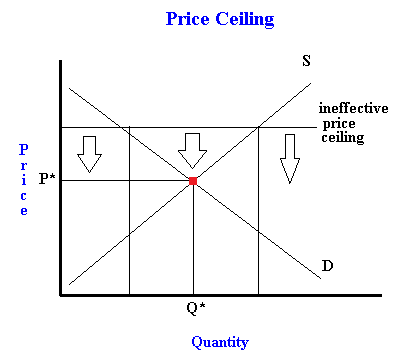The latter example would be a binding price floor while the former would not be binding.
How to fix binding price ceiling and floors.
Taxation and dead weight loss.
Note that the price floor is below the equilibrium price so that anything price above the floor is feasible.
A price ceiling is a legal maximum price but a price floor is a legal minimum price and consequently it would leave room for the price to rise to its equilibrium level.
A binding price ceiling is when the price ceiling that is set by the government is below the prevailing equilibrium price.
It s generally applied to consumer staples.
In other words a price floor below equilibrium will not be binding and will have no effect.
Percentage tax on hamburgers.
Price and quantity controls.
This is the currently selected item.
A price ceiling is a government or group imposed price control or limit on how high a price is charged for a product commodity or service governments use price ceilings to protect consumers from conditions that could make commodities prohibitively expensive.
For example if the equilibrium price for rent was 100 per month and the government set the price ceiling of 80 then this would be called a binding price ceiling because it would force landlords to lower their price from.
Example breaking down tax incidence.
Taxes and perfectly inelastic demand.
Price ceilings and price floors.
The effect of government interventions on surplus.
Another way to think about this is to start at a price of 100 and go down until you the price floor price or the equilibrium price.
This quiz worksheet combination will test your understanding of price ceilings and price floors.
Visual tutorial on calculating price floors and price ceilings.
Quiz questions will focus on topics such as binding price ceiling.
About this quiz worksheet.

